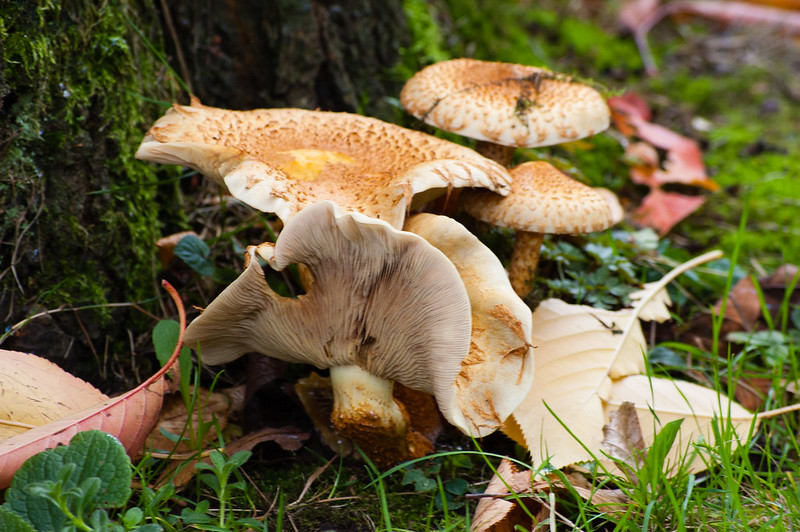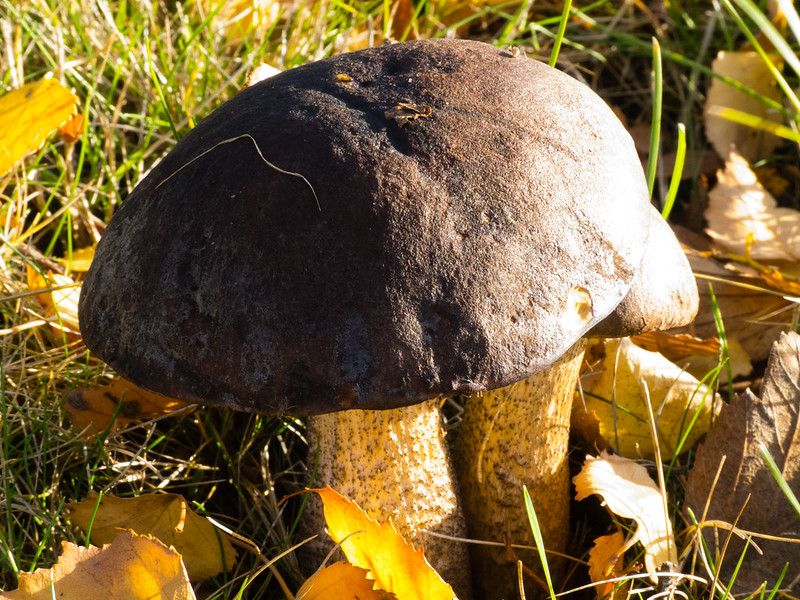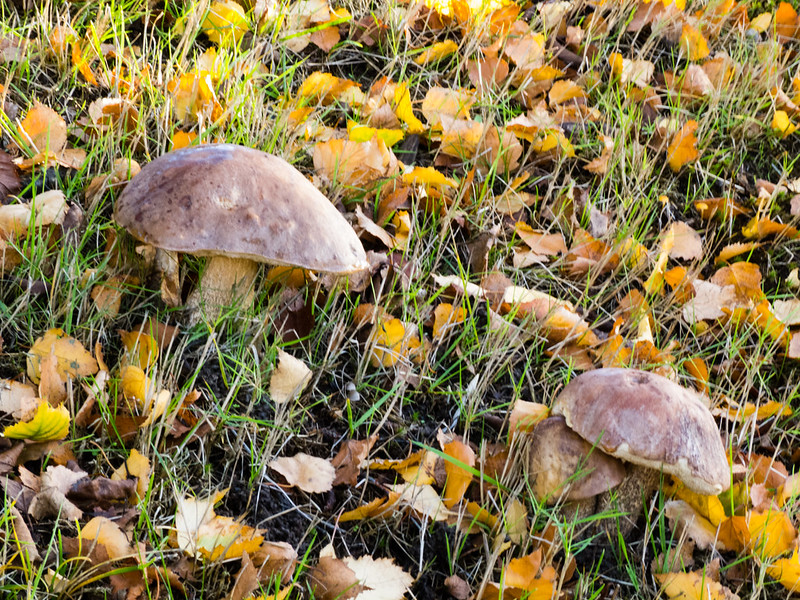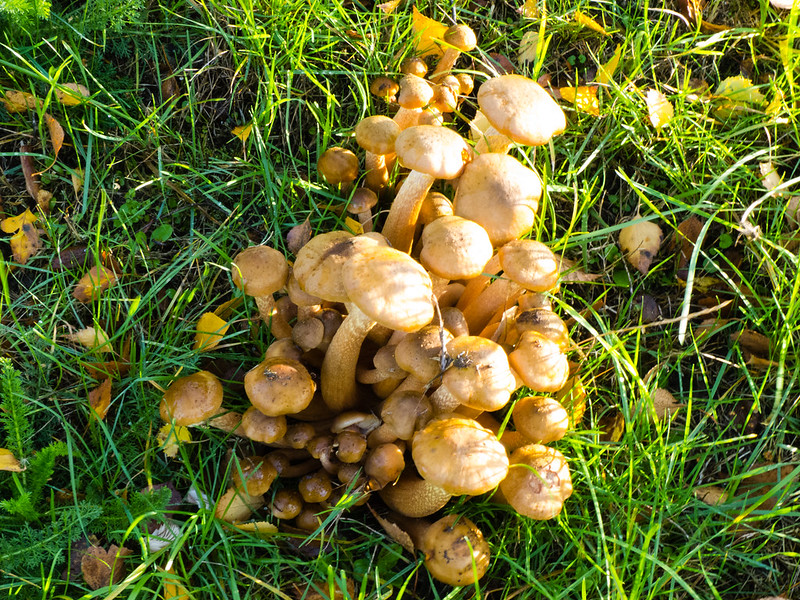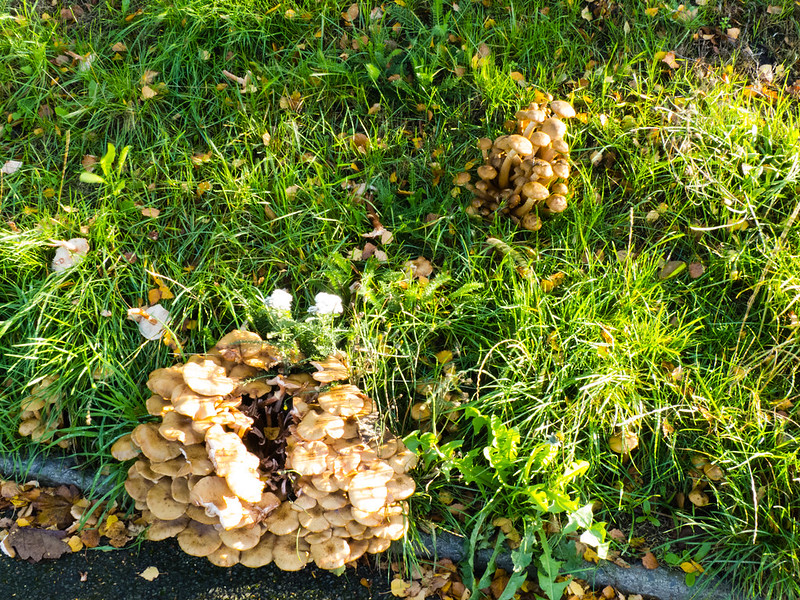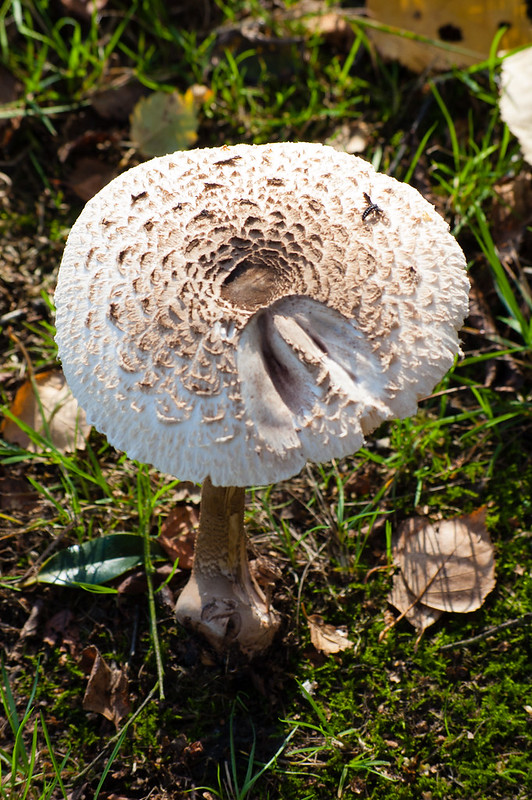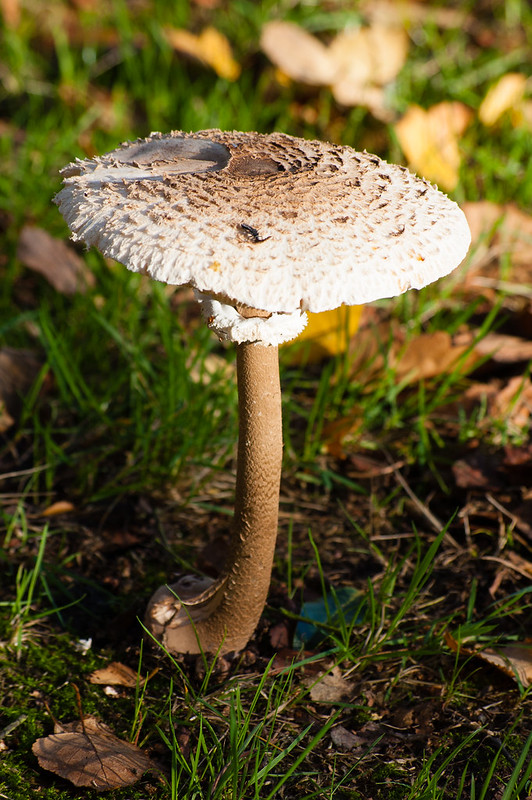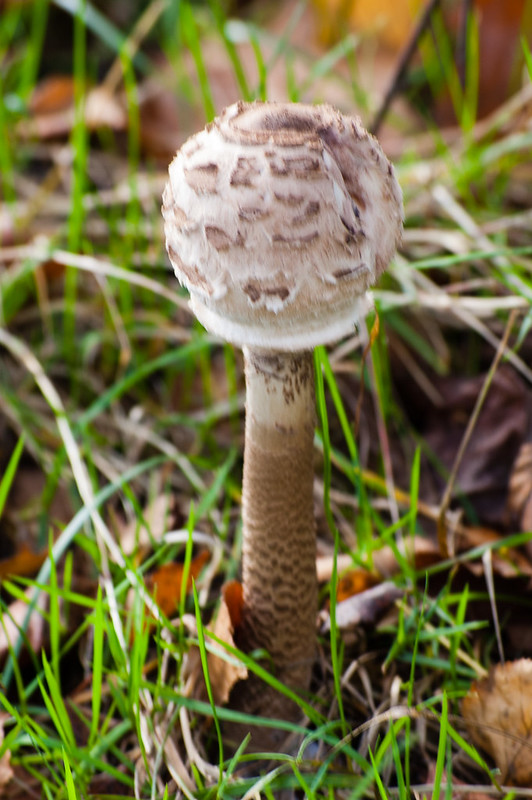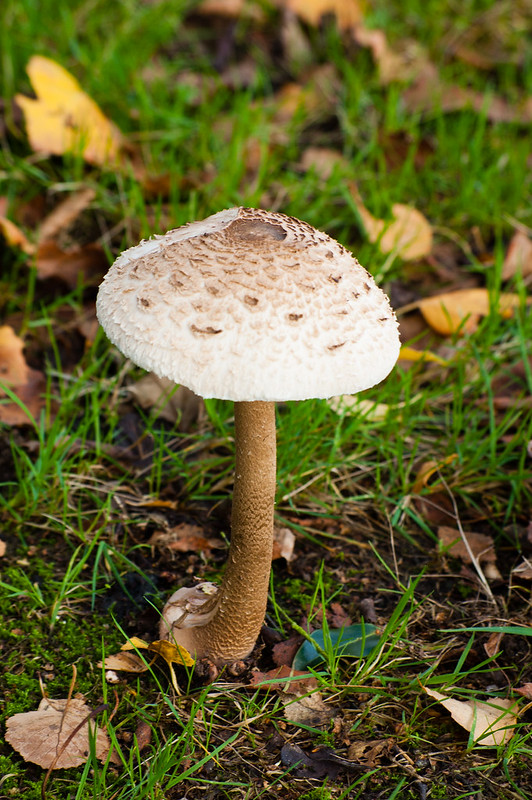Another fungus which is a common parasite of deciduous trees. This one was growing on a tree on a corner of Church Hill Road, Tettenhall.
David
Brown birch boletus by a main road
Boletes are toadstools which release their spores from the underside of the cap through pores not gills. Brown birch boletes only grow in association with birch trees, and are commonly found by such trees in the autumn.
These were a few of the brown birch boletes growing on Rectory Bank in Wordsley, which is also where I noticed the honey fungus in the previous post.
Parasol mushroom
The largest mushroom commonly found around here. It can be distinguished from its shaggy cousin by the snakeskin markings on its stem.
Said to be good to eat (though I have never tried one). Anyone who does fancy giving it a try should make sure they have the right species. Until the cap has fully opened into the parasol form, there are several seriously poisonous species it could be confused with. Once it is full grown the most likely confusion is with the shaggy parasol – this can cause gastric upsets in some people. There is also a very rare tropical variety which is somewhat similar even to the full-sized mushroom.
Girdled Knight
The toadstool Tricholoma cingulatum, called the Girdled Knight on
Roger’s Mushrooms
website. But this is more or less a word for word translation of a German name, Beringter Ritterling.
Kingfisher by a canal
A tiny flash of striking blue and red, but unmistakable as it zips along then rests to watch for prey.
The first picture is a cropped version of the second one.
This bird was fishing the upper section of the Stourbridge canal where it begins to peter out in the Buckpool LNR – in fact it is pictured at the start of the cul de sac side arm. I only had a brief view – the bird was not happy at the arrival of a large dog being walked along the other bank.


